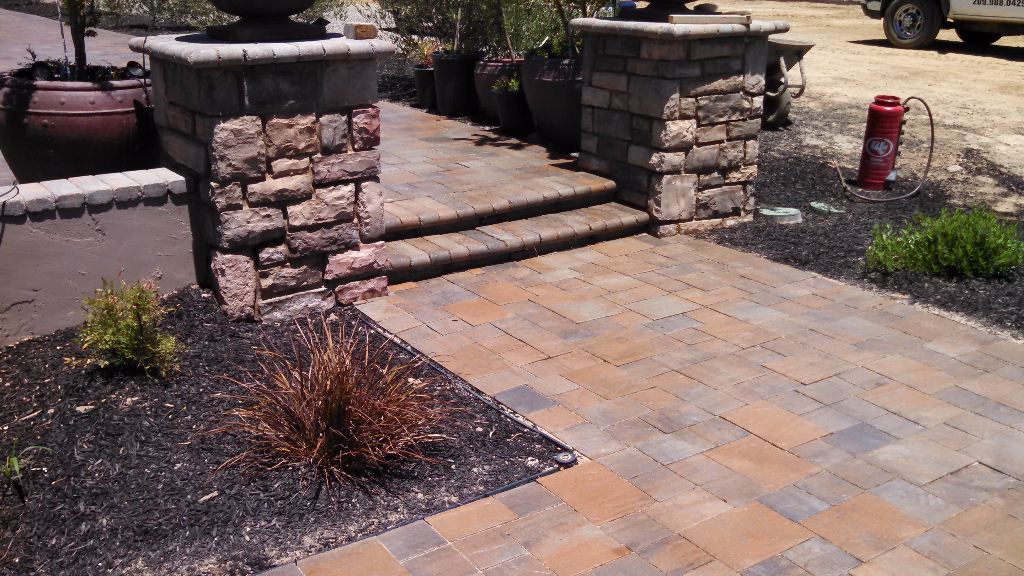Encinitas Stone Veneer
Number One Stone Veneer Contractors in Encinitas, CA
Get Your Quote for Concrete and Masonry
Call (760) 283-6733

Natural stone has an irresistible beauty. However, it is expensive and heavy to handle. For those yearning for the beauty of natural stone but are a bit reluctant due to the high costs involved with installing stone walls, stone veneer is a close choice.
Contact us at (760)283-6733 for stone veneer installations in Encinitas.
Stone veneer, also referred to as faux stone, are a building material used for decorating interior and exterior surfaces. It resembles natural stone, but it is lighter and easier to handle compared to natural stone. The porous and light properties make it easy to cut, design, and install. The veneer is as beautiful as the real stone, and it comes in different shapes and colors. Even professionals have trouble differentiating genuine rocks from the veneer.
Benefits of Veneer
1. Ease of installation
Compared to natural stone, the veneer is lightweight and much easy to install. Faux material adheres to all structurally sound surfaces. You do not need footings or ties. The installation process involves the following steps: lath, scratch the coat, and finally apply mortar and grout. There will be a lesser waste at the end of the installation process than when using real stone.
2. Longevity
Despite its lightweight nature, the faux stone has superior durability if well installed and maintained. Stone veneer can withstand extreme weather conditions without fading or cracking. It can endure years of weathering without much change of color. Unlike other coatings, no sealing or painting is required.
Production of Stone Veneer
The raw materials for manufacturing cultured stone are Portland cement, iron oxide pigment, and natural aggregates. The iron oxide pigment is for coloration. The first stone veneer ever was made of real stone. In the 1900s, manufacturers cut natural stone into thinner slabs, which were used as a veneer. Cement became part of the faux stone composition in the 1950s. Despite the fact stone veneer has cement as a component, it cannot be used structurally.
Today, most homeowners are deviating from the cultured stone veneer to the natural stone veneer. Some machines cut quarried stone to a very thin stone veneer of less than one inch thick. The machinery can shape the 900 degrees corners, which hide the real thickness of the coating. Most people prefer the natural stone veneer over the manufactured concrete coat.
Tips to Make Stone Veneer Look Great on Your Surfaces
Below are some of the standard procedures that should be done before the installation of a stone veneer to ensure its longevity and appearance.
Waterproofing
This is an important step that must meet the local building codes. If the building is set up in a humid area, moisture-resistant barriers should be installed. A weather shield, caulk, or flashing should be provided at metal transition points and the other regions that may lead to moisture penetration, including window openings.
Surface Preparation
Any chemical film on the walls should be removed with sandblasting, acid, or etching with masonry detergents. Before using acid, ensure that it will not react with the underlying surface. The removal of chemical films will make the surface rough, which leads to a more straightforward installation.
The coating can be applied to new or existing brick or concrete interior surfaces. Ensure that the surface has no defects and has not been painted. For exterior surfaces, use a non-corrosive wire or paper-backed lath before laying the veneer.
Installing
Use the type S or N mortar depending on the type of coating. You may use a bonding admixture to increase the adhesive strength of the adhesive. Refer to the mixing instructions of your selected bonding agent because dropping can be hard once it is cured.
You may proceed with the installation of the stone veneer after applying the metal lath and scratch coat. Where corner pieces are required, start with them to get a better guide for your pattern. Press the stones firmly against the scratch coat to ensure maximum bonding. Clean any extra mortar that oozes out around the edges before it cures.
Conclusion
The application of a stone veneer is not as easy as it seems. BSI recommends that a highly qualified company or contractor should handle processes such as waterproofing and surface preparation. Well, Encinitas Pro Concrete Co. is one of the engineering companies that adhere to the industry standards and is equipped with skilled personnel who can handle your project.
Contact us at (760)283-6733 for more information.

